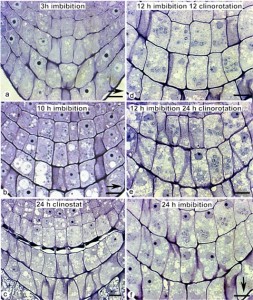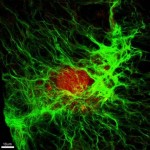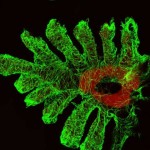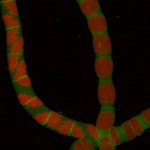Gravity is omnipresent on the surface of the earth. It helps to make our physical environment the way it is. It gives weight to objects, causes the rain to fall, water to flow, air to circulate and retained around the earth, and heat to dissipate. It is also the very force that has shaped our “1-G mentality”, which affects us at a subconscious level, so that we may design a piece of hardware that works perfectly fine on earth, but malfunctions in the microgravity environment of the outer space, such as in a space shuttle.
Since life on earth has evolved under the constant presence of gravity force, we naturally speculate that gravity must have a profound influence on earth life. You can learn more about this interesting topic by reading http://www.mainsgate.com/spacebio/Sptopics/hy_resource/holton.pdf
 |
I’m particularly interested in plant gravitropism, a growth response to gravity that leads to roots growing downward into the soil and shoots growing upward into the air, forming the fundamental plant architecture critical to the survival of plants and most other life forms on earth.We discovered that flax roots begin to sense gravity very early on during seed imbibition, even before they emerge! See the groups of images below for what happens in the sensing cells of the root cap over time. This temporal change in root gravitropism is intriguing, as it prompts questions such as whether the gravsensitivity changes as roots mature, the study of which helps us gain more insight into the sensing machinery. |
 |
The development of the columella during germination of flax roots. Root cap cells contained no starch-filled amyloplasts after 3h of imbibition (a). Amyloplast development and sedimentation in roots after 10 h of imbibition represents the developmental state of amyloplasts when 75% of the roots exhibited gravi-competency (b). Clinorotation of seeds from the beginning of imbibition had no effect on amyloplast formation or integrity of the root cap during the first 12h, but caused disintegration of amyloplasts and loss of an entire story of columella cells by 24 h (c). Amyloplasts and cap remained intact in roots that were clinorotated after 12 h of static imbibition for 12h (d) or 24h (e). Roots at 24 h of imbibition showed large amyloplasts most prominent in the two upper cell layers (f). The arrow indicates the direction of the gravity vector in a, b, and f. Root caps depicted in c, d, and e were clinorotated. Bars = 15 μm. (From: Ma and Hasenstein, 2006.Plant Physiology 140: 159 – 166).We are planning to probe the gravisensing machinery and the role of cytoskeleton using confocal microscopy, which is made available to us from our recent NSF grant. Thanks to NSF and panel reviewers! |









